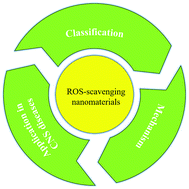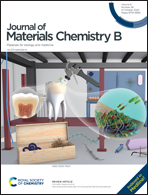Applications of nanomaterials for scavenging reactive oxygen species in the treatment of central nervous system diseases
Abstract
Reactive oxygen species (ROS) are the key signaling molecules in many physiological processes and play an important role in the development and function of the central nervous system (CNS). However, the process of CNS diseases is often accompanied by excessive production of ROS, which will induce oxidative stress, aggravate the pathological changes of the diseases, and cause neuroinflammation and loss of neurons. Therefore, it is beneficial for the treatment of CNS diseases and the recovery of the nerve function to eliminate the excessive ROS formed during the pathological changes of the CNS. Although several antioxidants have been proved to restore redox balance, their disappointing clinical performance has predicted less optimistic prospects in antioxidant therapy for ROS-associated CNS diseases. In recent years, nanomaterials with ROS-scavenging ability have been considered as promising substances to alleviate oxidative stress in CNS diseases because of their excellent ROS scavenging effect and biodistribution. This review article aims to elucidate the ROS scavenging mechanisms of various nanomaterials, introduce the reasons for ROS generation in CNS diseases, and review the applications of nanomaterials in scavenging ROS in CNS diseases reported in recent years.



 Please wait while we load your content...
Please wait while we load your content...